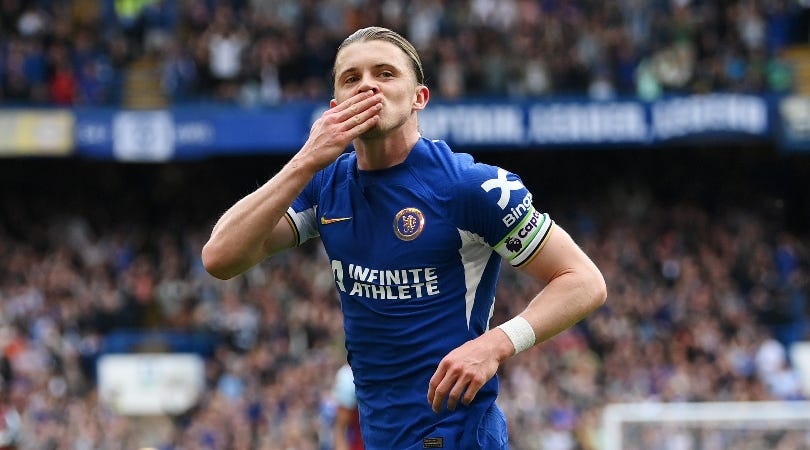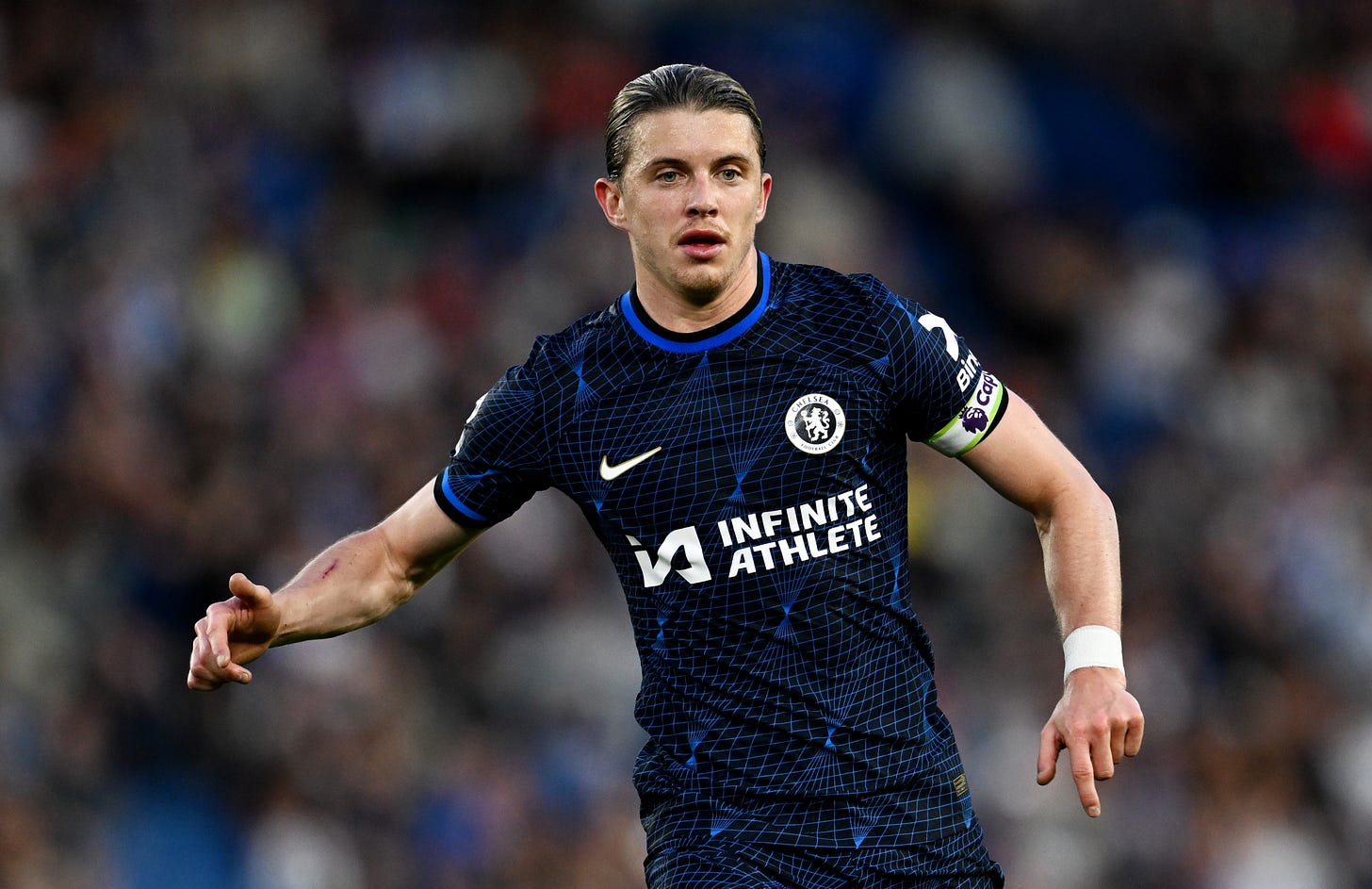Conor Gallagher leaves Chelsea: Why are the Blues selling their academy players?
The England midfielder has moved to Atlético Madrid, the latest victim of a turbulent transfer strategy at Stamford Bridge

The sale of a homegrown player is often emotional. When a footballer has been at a club since a young age and grew up supporting that team, the connection with the fans is more special. When they move on, it hurts.
Usually, those players are forced to leave because they are not up to the required standard. That is the ruthless nature of football, after all. But Conor Gallagher is an established England international, a player who joined Chelsea at the age of six and one who was admired by some of Europe’s top teams. On Wednesday, he was sold to Atlético Madrid for around £34 million.
On their social media channels, Chelsea posted a lovely video featuring some of the midfielder’s memorable moments with the Blues – from a promising player with the youth side, to skippering the first team and speaking of how he grew up idolising Blues legend Frank Lampard.
And on Instagram, Gallagher himself wrote: “To everyone at Chelsea, thank you for making my dreams come true. It’s been an absolute honour every time I put on the shirt, and it was a dream come true to captain the team on many occasions. I loved every moment. These memories will last forever.”

In truth, there should have been many more to savour. So why has he left? The official line is that he is not suited to Chelsea’s style of play under new manager Enzo Maresca, but the reality is that he has been on the market for some time.
In fact, Chelsea have gone to great lengths to sell a player who is not only adored by the fans, but was also key under former manager Mauricio Pochettino last season. To push through a deal, the Blues have even re-signed former attacker João Félix, who did not exactly cover himself in glory last time around at Stamford Bridge. Following his loan spell in the second half of the 2022/23 season, Chelsea even opted against signing the Portuguese on a permanent deal.
But buying the attacker – for £42m, plus £4.3m in add-ons – allows Atleti to sign Gallagher, who had previously been sent out to Madrid while a move was to be finalised, only to be forced to return after a proposed deal for the Spanish side’s striker Samu Omorodion fell through.
So Chelsea appear to have signed a player they did not particularly want, at a greater fee than that received for Gallagher, just so Atleti had enough money to take Gallagher off their hands. It is bizarre.

Gallagher joins Mason Mount, Ian Maatsen, Ruben Loftus-Cheek, Callum Hudson-Odoi and Armando Broja in a growing list of academy talents sold by the Blues in recent times.
It is part of a trend which has seen Premier League teams dispensing with their homegrown stars. And that’s because, when an academy player is sold, the entire amount goes down as ‘pure profit’ in the clubs’ accounts. That, in turn, can help these teams stay on the right side of the PL’s profit and sustainability rules (PSR).
“This is not Chelsea's problem. This is the rules problem,” Maresca said recently. “The clubs are compelled to sell players because of the rules. It’s not a Chelsea problem, it is a Premier League problem. The intention from Chelsea is not to sell - but the rules in the end make us. I love that [Francesco] Totti was at Roma for 20 years and a one-club man.
“I love that, we all love that. It’s the rules. My personal opinion is it’s a shame because we all like to see a one-club man. If we want to promote academy players – yes, change the rule.”

Other clubs are doing this, too: Manchester City sold Cole Palmer to Chelsea last summer, while Oliver Skipp has just left Tottenham for Leicester and Arsenal’s Emile Smith Rowe joined Fulham earlier in August. But no team is exploiting the rule quite like Chelsea and in the meantime, the Blues have amassed a huge squad of around 40 players following an outlay in excess of £1 billion since Todd Boehly acquired the club in 2022. Maresca has admitted that around 15 to 20 of those are not even training with the first team. He didn’t even seem to know the exact number.
How are they doing it? By signing players on long-term contracts – Mykhailo Mudryk was given an extraordinary eight-and-a-half year deal in January 2023, for example – and spreading out the costs over an extended period, Chelsea are using a process called amortisation to spend big now and pay later.
Is it sustainable in the long term? It may be. But it means the club are developing players purely to spend huge sums on others, depriving fans of any sort of connection with homegrown talents who would previously been seen as the backbone and the heartbeat of a football club. It is also another damning indictment of the state of the modern game. And it’s absolutely joyless.



